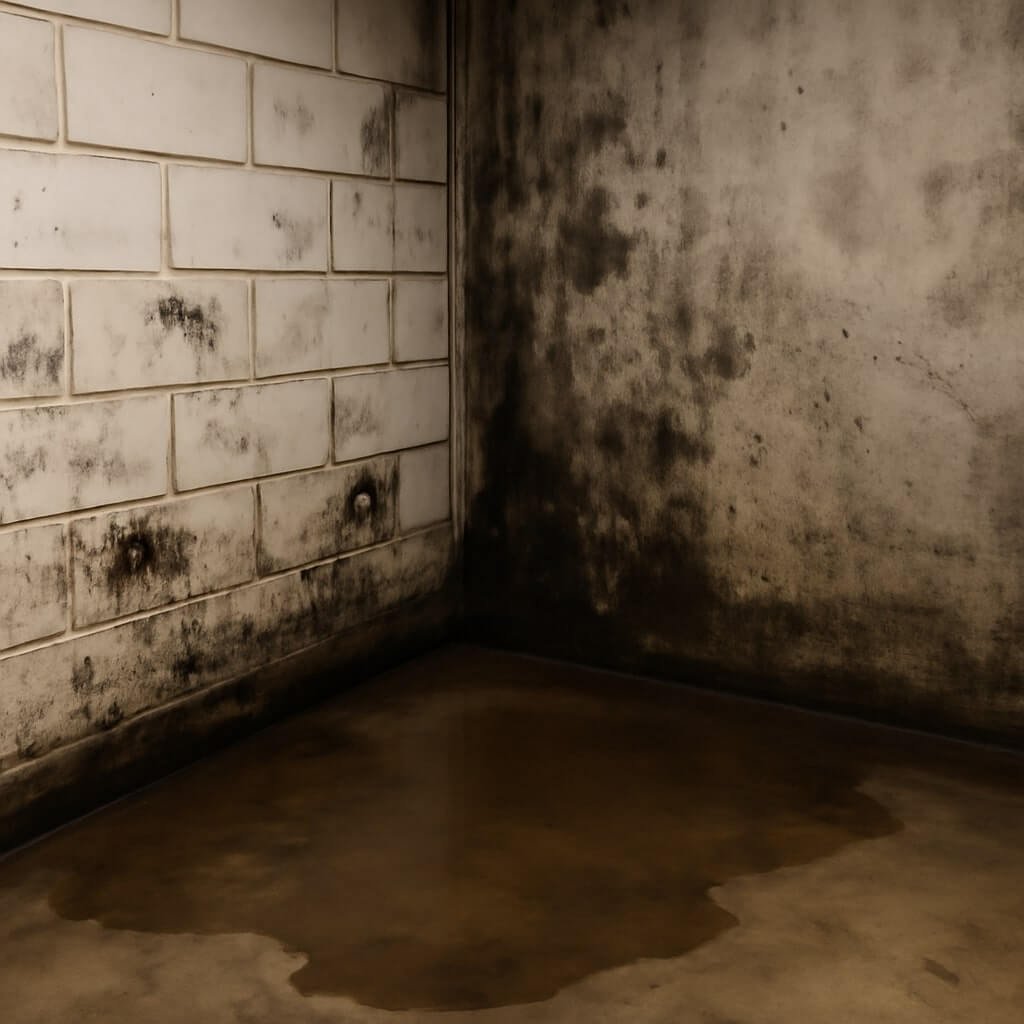Basement waterproofing is an essential home maintenance task that protects your home’s foundation from water intrusion. When water seeps into your basement, it can cause structural damage, mold growth, and a slew of costly repairs. So, understanding what basement waterproofing involves and why it’s vital is the first step toward safeguarding your property.
Waterproofing refers to the process of making a basement resistant to water entry. It usually involves a combination of barriers, drainage systems, and sealants designed to prevent moisture from penetrating basement walls and floors. Given that basements are typically below ground level, they are especially vulnerable to water pressure from soil and surface runoff.
Common Causes of Basement Water Damage
Water can invade your basement for many reasons. Some of the most common causes include:
- Poor grading or sloping around the home causes water to flow toward the foundation.
- Cracks in the foundation walls or floor that allow seepage.
- Faulty or clogged gutters and downspouts that don’t direct water away.
- High water table levels or heavy rainfall saturating the soil.
- Improper drainage systems inside or outside the basement.
Understanding these causes helps homeowners take preventive steps before damage occurs.
Signs Your Basement Needs Waterproofing
Not sure if your basement needs waterproofing? Watch out for these warning signs:
- Persistent dampness or wet spots on walls and floors.
- Musty odors indicate mold or mildew growth.
- Efflorescence — a white powdery residue on basement walls.
- Visible cracks in foundation walls or flooring.
- Water stains or discoloration.
- Peeling paint or bubbling wall surfaces.
If you notice any of these symptoms, it’s time to consider a waterproofing solution.
Types of Basement Waterproofing Systems
There are two main categories of waterproofing systems: interior and exterior solutions. Each has its benefits and is often used in combination for the best results.
Interior Waterproofing Solutions
Interior systems aim to manage water once it enters the basement and prevent it from causing damage.
Sealants and Coatings
These are waterproof paints and sealants applied directly to basement walls and floors. They help block moisture from penetrating the concrete and are often used as a first defense.
Interior Drainage Systems
Interior drainage solutions include drainage tiles or channels installed around the basement perimeter under the floor. These systems collect water seeping through walls and direct it to a sump pump, which expels it away from the home.
Exterior Waterproofing Solutions
Exterior waterproofing focuses on preventing water from ever entering the basement by addressing the outside environment.
Exterior Membranes and Coatings
These are thick, waterproof barriers applied on the outside foundation walls. They block water from penetrating the concrete and are often combined with drainage boards to channel water away.
Exterior Drainage Systems
Proper grading, French drains, gutters, and downspouts are crucial exterior drainage components. They ensure that water flows away from the home foundation, reducing hydrostatic pressure on the basement walls.
Benefits of Professional Basement Waterproofing
While DIY waterproofing might be tempting, hiring a professional ensures:
- Thorough inspection and identification of all problem areas.
- Use of industry-grade materials and proven techniques.
- Long-lasting solutions that maintain home value.
- Prevention of costly water damage and mold remediation.
- Peace of mind knowing your home is protected.
Cost vs. Value
Though professional waterproofing can be costly upfront, it often saves homeowners thousands in future repairs and increases property resale value. An investment today is protection against major headaches tomorrow.
DIY Basement Waterproofing: Pros and Cons
DIY waterproofing can be suitable for minor cracks or maintenance, but carries risks if the problem is severe. Incorrect application can worsen damage, and many waterproofing steps require specialized equipment and knowledge.
Choosing the Right Basement Waterproofing System
Factors influencing your choice include:
- Soil type (clay soils retain more water, requiring robust drainage).
- Climate (wet regions may need stronger waterproofing).
- Basement condition and existing damage.
- Budget and long-term goals.
Installation Process Explained
Professional installation often follows these steps:
- Site inspection and damage assessment.
- Excavation around the foundation (for exterior systems).
- Application of waterproof membranes or coatings.
- Installation of drainage systems and sump pumps.
- Backfilling and site cleanup.
Maintenance Tips for Waterproofed Basements
To ensure your system works well:
- Regularly clean gutters and downspouts.
- Inspect sump pumps and test functionality.
- Check for new cracks or leaks.
- Keep grading away from the foundation.
- Schedule periodic professional inspections.
Common Mistakes to Avoid in Basement Waterproofing
- Ignoring exterior drainage issues.
- Relying solely on interior sealants.
- Delaying repairs after water damage signs.
- Using improper materials or products.
- Attempting complicated DIY waterproofing without expertise.
Frequently Asked Questions (FAQs)
1. How much does basement waterproofing cost?
Costs vary depending on the system and severity, but typically range from $3,000 to $10,000.
2. Can I waterproof my basement myself?
Small cracks can be sealed DIY, but professional waterproofing is recommended for extensive issues.
3. How long does waterproofing last?
Professional systems can last 10-25 years with proper maintenance.
4. Will waterproofing increase my home’s value?
Yes, it protects your foundation and reassures buyers, increasing market value.
5. What causes basement water problems?
Poor drainage, cracks, high water tables, and faulty gutters are common causes.
6. Is basement waterproofing covered by insurance?
Usually, water damage from maintenance issues isn’t covered; check your policy specifics.
Conclusion and Final Thoughts
Investing in top-rated basement waterproofing systems is a smart way to protect your home’s foundation, health, and value. Whether you choose interior or exterior solutions—or a combination—the key is timely action and professional guidance. Don’t wait until water damage disrupts your life; take steps today to secure a dry, safe basement for years to come.




